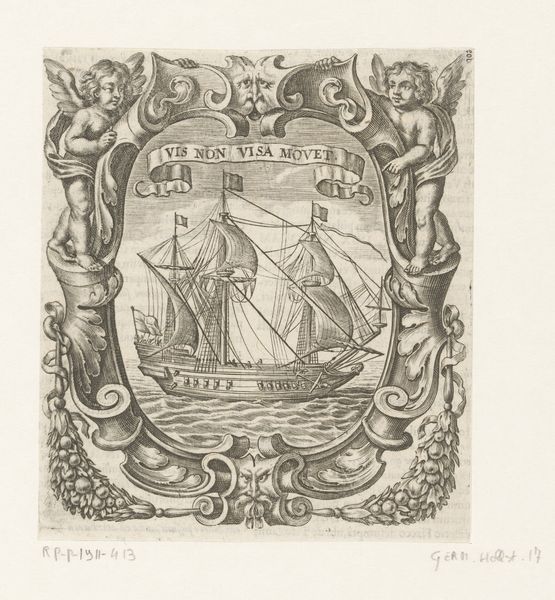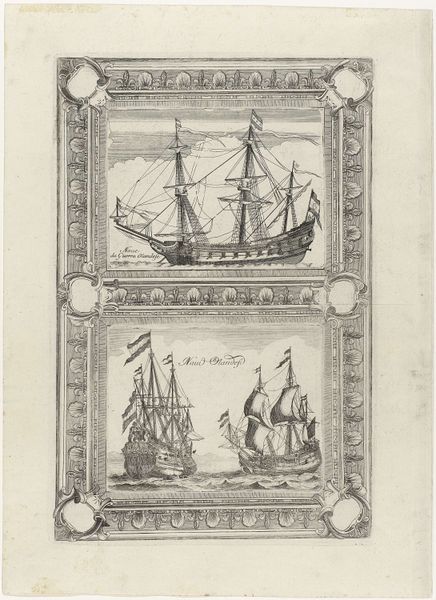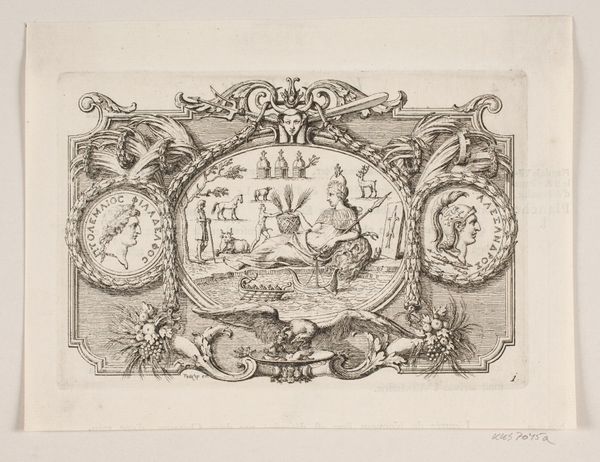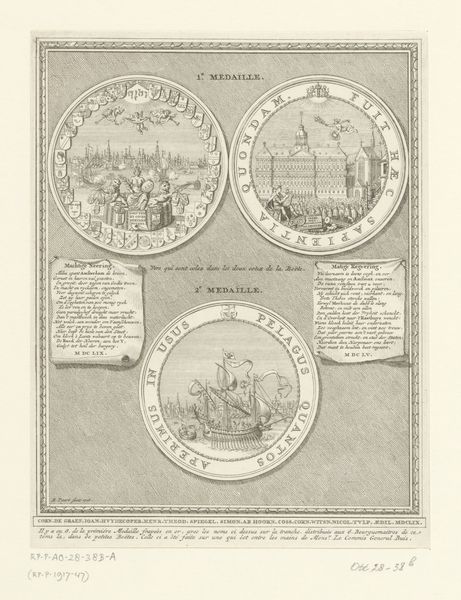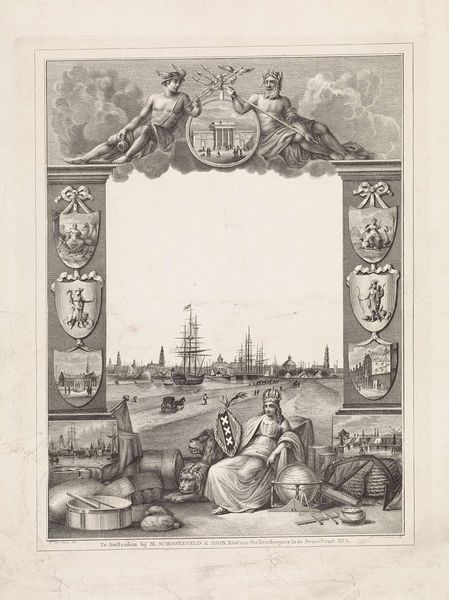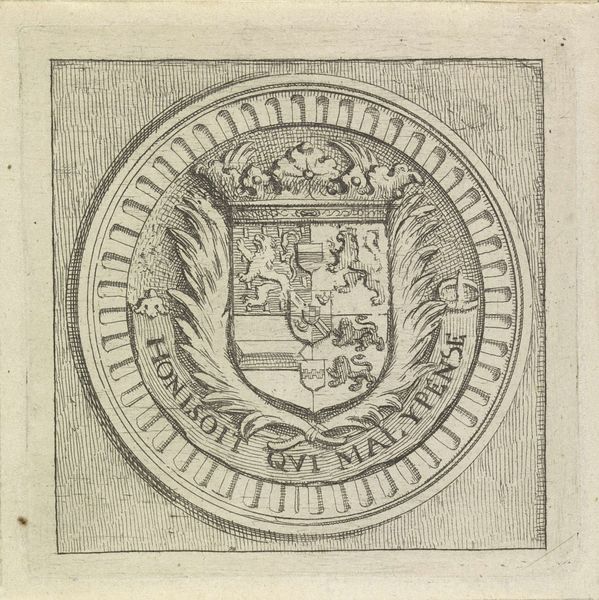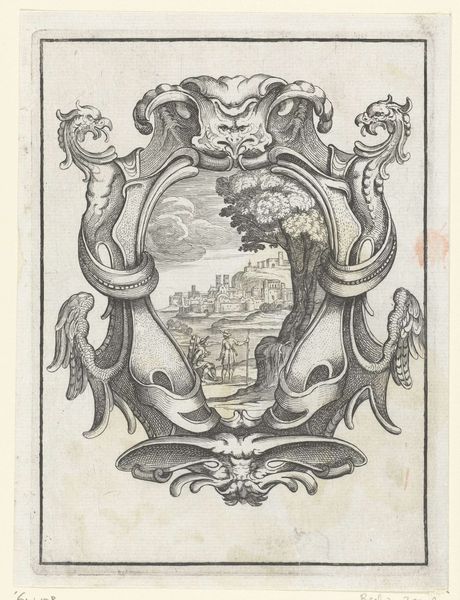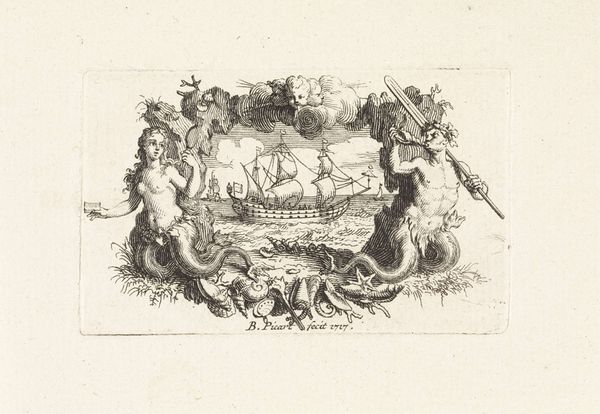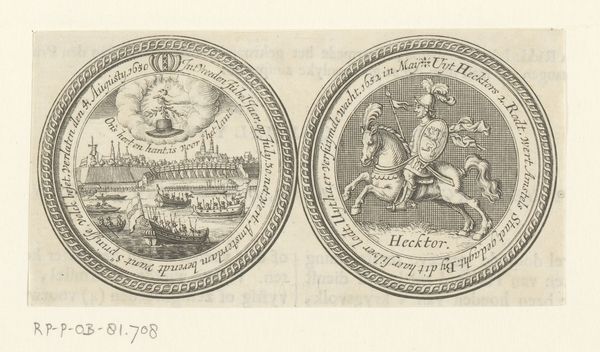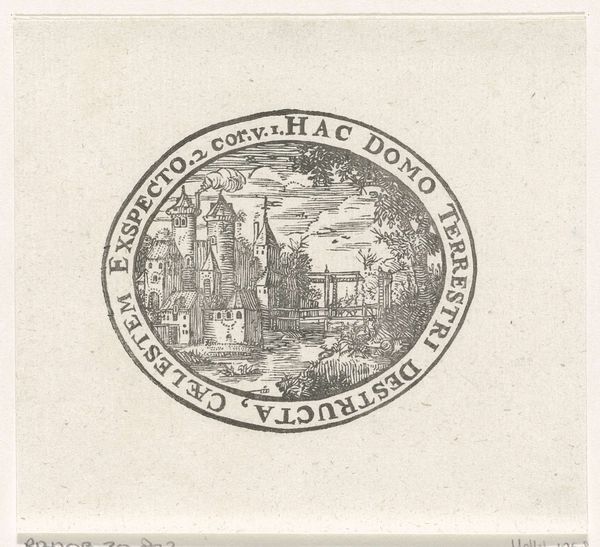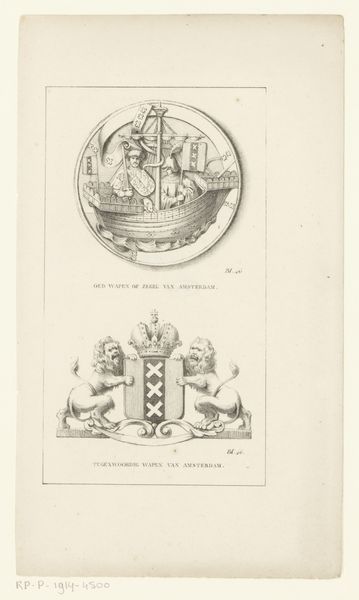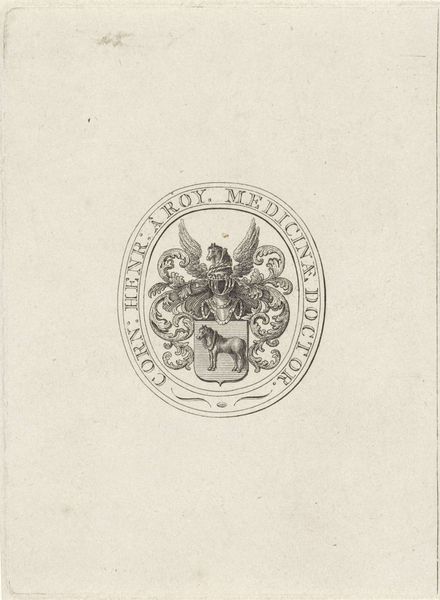
drawing, print, paper, ink
#
drawing
#
narrative-art
#
baroque
# print
#
paper
#
ink
#
cityscape
#
history-painting
Dimensions: height 95 mm, width 94 mm
Copyright: Rijks Museum: Open Domain
Editor: So, this is "Penning op de Inwijding van het stadhuis," a print in ink on paper, made in 1718 by Bernard Picart. It depicts a city and ships within a circular border. The details are impressive. What strikes you about this piece? Curator: What immediately grabs me is the conscious decision to depict the dedication of the city hall through the visual language of maritime power. How does situating this civic event within the context of Dutch naval dominance during the Baroque period inform your understanding of the artwork? Editor: I guess it speaks to the power and prosperity that the city wanted to project? Like they're saying, "Look how wealthy and important we are." Curator: Precisely. It goes deeper. This wasn't just about projecting wealth; it was about consolidating power and crafting a narrative of civic identity intertwined with colonial ventures. Consider, who was benefiting from this "prosperity", and at what cost? How do you see the echoes of this historical narrative in contemporary society? Editor: That’s a good point. The wealth probably came at the expense of exploited people and resources. Does the image give you a sense of the social climate at that time? Curator: Absolutely. It's carefully constructed to evoke a sense of pride and authority, subtly masking the injustices inherent in the colonial system that fueled that prosperity. Now, look closely at the cityscape. What kind of power dynamics can we decode? Editor: So, it's more than just a celebratory image; it's a complex statement about power, wealth, and identity, and we need to acknowledge who paid the price. That definitely shifts how I view the artwork. Curator: Indeed. By interrogating these seemingly straightforward historical representations, we begin to unravel the layers of ideology and power they embody, and consider how such echoes might continue in cultural objects today. Editor: I learned so much more than just historical context by thinking about power structures. It opens a whole new perspective on art.
Comments
No comments
Be the first to comment and join the conversation on the ultimate creative platform.

